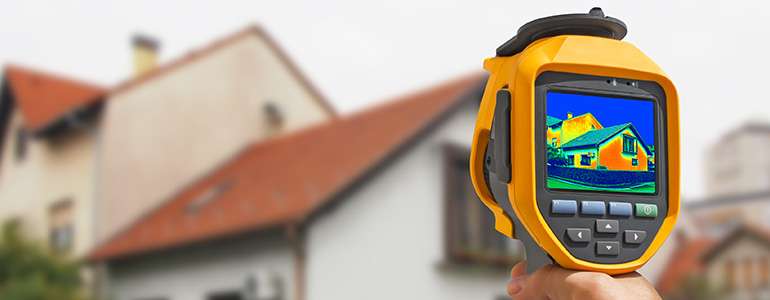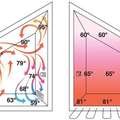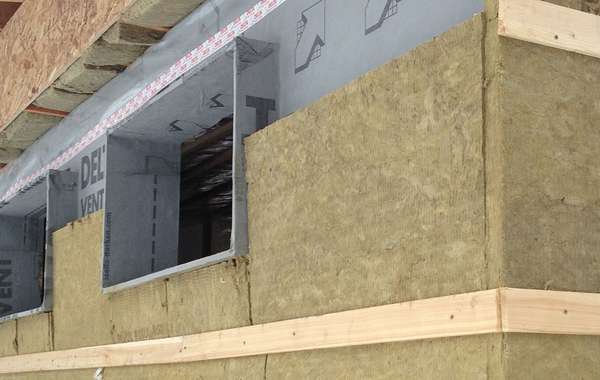Home insulation - how much do you need and where to put it:
Think of the heat in your home as if it were water behind a dam, and that insulation levels were the concrete wall of the dam. Would you choose the height of that concrete wall randomly, or would want an even level of concrete to hold back as much water as possible? You certainly wouldn't want an extremely high wall on one side and lower on another. The relationship between heat movement and insulation is a bit like that.
The cold hard facts about heat loss:
- Yes, a bit more heat is lost through the ceiling than the walls, but not nearly as much as much as you might think. The rate of heat loss from any surface of your home depends on the difference in temperature, and it just isn't that different at the ceiling compared to the walls.
- You won't gain heat from an un-insulated basement floor in winter. Heat moves from warm to cold seeking equilibrium, and the ground in Canada and the northern US states is roughly 39-50°Fahrenheit, or 4-10° Celsius, when you go down 5 or more feet. So unless you keep your basement colder than about 50°F, you will lose heat to the ground, not gain it.
- If you have in-floor radiant heat in the basement and only 2 inches of insulation under your slab (which is pretty standard), you'll be losing most of your heat down there, and not our through you attic as you might suspect. That is a perfect example of misplaced resources and unbalanced insulation if you have a fluffy R60 blanket in the ceiling but a poorly insulated slab floor.
- Air leaks are responsible for a surprisingly large amount of heat loss, so plan your air barrier well in the design phase and be very meticulous with air sealing when working onsite.
- High-quality windows on the south can gain more heat in the day than they lose at night, giving you a net heat-gain. Windows on all other sides always result in a net heat-loss, so keep that in mind, buy good ones and don't make them overly large for no reason.
- Surpassing the insulation requirements of building codes might save you money not only in the future, but immediately. The purchase and installation of greater levels of insulation will increase building costs and your mortgage payment every month, but that can often be offset entirely when you are rewarded with lower utility bills. Meaning, your monthly expenditures for a better house may be about the same at first, but would be much cheaper once your mortgage is paid.
There is a tendency to beef up the insulation of a building envelope somewhat randomly, and in an unbalanced way. While it is true that the more insulation you put in any area will slow heat loss in that spot, the question remains, could that insulation be of better use elsewhere? That answer is often yes.
Energy modeling can help determine how much heat would be lost from each surface of a home; armed with that knowledge you can apply your insulation dollars in a way that they give you the most comfort and the best return on investment. If you're building new and have enlisted the help of a designer or architect, ask how they arrived at their conclusions as to how much insulation to put in different locations, and if energy modelling was involved.

Choosing the right windows:
Another case of balancing your thermal envelope is in terms of window quality. Having an extremely well-insulated wall is great, but if you blew the budget on insulation and had to put in low-quality windows, they become the weak link in the chain and you can effectively undo all your own efforts to reduce heat loss.
So in the case of a super-insulated wall with cheap windows, the loss of thermal performance of that entire wall section (windows included) may have been a more expensive option than reducing the insulation level slightly and applying that money to a much higher quality window.
In conclusion, how much insulation is best?
Balancing insulation is about respecting the laws of diminishing returns. Example - If I have a wall with just 2 inches of insulation and I add another 2 inches, I will certainly get my money out of it as that two inches doubles my insulation levels. If I have a wall with 30 inches of insulation and I add 2 inches, I may never get my money out of it, since that same investment is 1/15th of my total.
There is a 'sweet spot' in terms of insulation levels, and that is a sliding scale depending on your climate. So in a nutshell, that is the art of balancing insulation - spread it evenly and in the right amounts for the right areas, and you will get the most out of your investment.
Now you know more about the best way to insulate a home; Find all you need to know about high performance construction in the Ecohome Green Building Guide, or see these pages:
Sign up here for a free Ecohome Network Membership to grow your business, manage your build or get access to preferred pricing on select products! |































If the date for this article is correct, Nov. 10, 2016, there have been significant changes in the building industry. I noticed you don't speak much about closed cell spray foam as a building envelop material.....why?
Hi Robert, yes it is an older page. The spray foam industry had a heavy environemental impact, until recently as a few manufacturers have switched to safer blowing agents, you can read more here. Best regards.